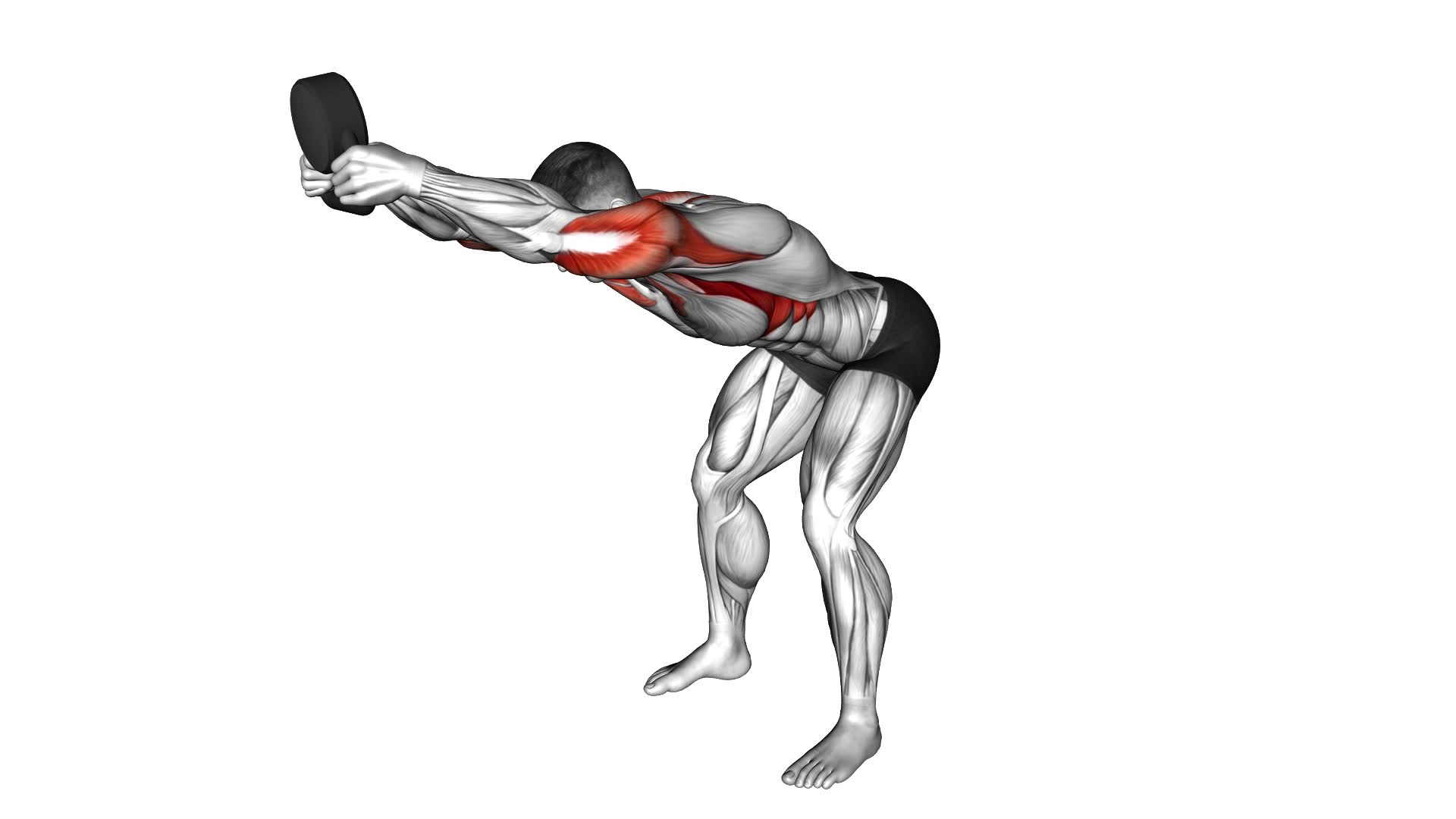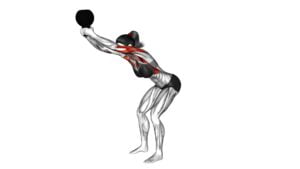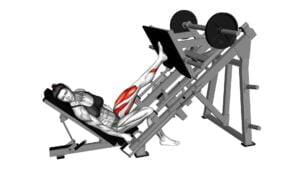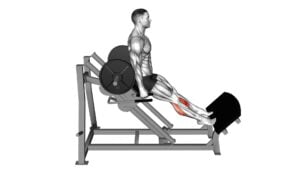Kettlebell Angled Press – Video Exercise Guide & Tips

Are you looking to improve your upper body strength and stability? The kettlebell angled press is a great exercise to add to your routine.
Watch This Exercise Video
In this video exercise guide, we'll show you the proper form and technique for the angled press, as well as variations to suit different fitness levels.
Avoid common mistakes and maximize your results with these helpful tips.
Get ready to challenge yourself and achieve your fitness goals with the kettlebell angled press.
Key Takeaways
- The Kettlebell Angled Press strengthens and stabilizes shoulder muscles, builds upper body strength, and improves shoulder mobility.
- Different variations of the exercise, such as the Single-Arm Kettlebell Angled Press and Alternating Kettlebell Angled Press, provide options for different fitness levels.
- Proper form and technique are essential, including focusing on body alignment, engaging the core, and paying attention to breathing.
- Body alignment and core engagement during the exercise helps minimize strain on the neck and shoulders, stabilize the spine and pelvis, and enhance balance training.
Benefits of the Kettlebell Angled Press
One of the benefits of the Kettlebell Angled Press is that it helps strengthen and stabilize your shoulder muscles by targeting them from multiple angles. This exercise is highly effective in building upper body strength and improving shoulder mobility. By using kettlebells, you can add resistance and challenge to your workout routine.
The Kettlebell Angled Press offers variations that allow you to target different muscles and increase the difficulty level. One variation is the Single-Arm Kettlebell Angled Press, which involves pressing the kettlebell from a diagonal position with one arm while keeping the other arm by your side. This variation helps to isolate and strengthen each shoulder individually.
Another variation is the Alternating Kettlebell Angled Press, where you alternate pressing the kettlebell with each arm. This variation adds an element of coordination and balance, as you have to stabilize your body while performing the exercise.
Proper Form and Technique for the Exercise
To perform the kettlebell angled press with proper form and technique, it's crucial to focus on body alignment. Keep your body straight and engage your core for stability throughout the exercise.
Additionally, pay attention to your breathing, inhaling as you lower the kettlebell and exhaling as you press it overhead for better control and efficiency.
Body Alignment During Exercise
Maintain proper body alignment by aligning your spine, engaging your core, and keeping your shoulders down during the Kettlebell Angled Press exercise. Body alignment is crucial to ensure correct form and technique, maximizing the effectiveness of the exercise while minimizing the risk of injury.
To align your spine, stand tall with your feet shoulder-width apart, knees slightly bent. Engage your core by drawing your navel towards your spine, creating stability and supporting your back.
Keep your shoulders down and away from your ears, maintaining a relaxed and neutral position. This ensures that the focus remains on the targeted muscles and prevents unnecessary strain on your neck and shoulders.
Remember to maintain proper body alignment throughout the entire exercise for optimal results.
Core Engagement for Stability
Engage your core for stability during the Kettlebell Angled Press exercise. Core activation is crucial for maintaining proper form and technique throughout the movement. As you press the kettlebell upwards at an angle, your core muscles work to stabilize your spine and pelvis, preventing any excessive movement or swaying.
By actively engaging your core, you enhance your balance training and improve overall stability. To activate your core, focus on drawing your belly button towards your spine, as if you were bracing for a punch. This will create a strong foundation and allow you to generate more power from your lower body during the exercise.
By incorporating core engagement into your kettlebell angled press, you can maximize the benefits of the exercise and promote a stronger, more stable body.
Now let's move on to breathing techniques for control.
Breathing Techniques for Control
Continue to enhance your form and technique during the Kettlebell Angled Press by focusing on proper breathing for control.
Proper breathing techniques can help you maintain stability and maximize your performance during this exercise. As you lower the kettlebell to the starting position, inhale deeply through your nose, filling your diaphragm with air. Exhale slowly and steadily through your mouth as you press the kettlebell upward.
This controlled breathing pattern will enhance your stability and power throughout the movement. Additionally, incorporating relaxation techniques, such as taking deep breaths and consciously relaxing your muscles, can help reduce tension and improve your overall performance.
By mastering the proper breathing techniques and relaxation techniques, you'll be better equipped to perform the Kettlebell Angled Press with control and precision.
Now, let's explore variations to modify the exercise for different fitness levels.
Variations to Modify the Exercise for Different Fitness Levels
To modify the kettlebell angled press for different fitness levels, incorporate variations that cater to individual strength and ability. By adjusting the weight of the kettlebell, you can make the exercise more or less challenging. For beginners or those with limited upper body strength, start with a lighter kettlebell and gradually increase the weight as you become more comfortable and proficient with the movement.
Additionally, you can modify the exercise by changing the angle of the press. Instead of pressing the kettlebell straight up, you can press it at a slight angle towards the opposite shoulder. This variation engages different muscles and adds a new level of difficulty to the exercise.
Another modification is to perform the angled press from a kneeling position. This reduces the amount of weight you have to lift and can be a great option for individuals who are recovering from an injury or have limited mobility.
Finally, if you're looking to increase the intensity of the exercise, try performing the angled press while standing on an unstable surface, such as a balance board or Bosu ball. This challenges your core stability and further engages your muscles.
Remember to always listen to your body and choose variations that are appropriate for your fitness level.
Common Mistakes to Avoid While Performing the Kettlebell Angled Press
To perform the kettlebell angled press correctly, it's important to focus on proper form. One common mistake to avoid is allowing your shoulders to round forward, which can lead to injury. Instead, keep your shoulders stable and engaged throughout the movement.
Additionally, be mindful of your breathing, exhaling as you press the kettlebell overhead to maintain stability.
Proper Form Importance
Maintaining proper form is crucial for maximizing the effectiveness and safety of your kettlebell angled press. To ensure proper body mechanics and muscle activation during this exercise, it's important to avoid common mistakes. Here are some tips to help you maintain proper form:
- Keep your core engaged and your back straight throughout the movement.
- Avoid leaning too far forward or backward, as this can strain your lower back.
- Instead, maintain a slight forward lean from the hips to engage your core and stabilize your body.
- Make sure your knees are slightly bent and your weight is evenly distributed between both feet.
Shoulder Stability Tips
When performing the kettlebell angled press, it's important to maintain shoulder stability to avoid common mistakes and ensure proper form.
Proper shoulder stability is crucial for shoulder mobility and injury prevention.
To maintain shoulder stability during the kettlebell angled press, make sure to keep your shoulder blades down and back, engaging the muscles of your upper back and shoulders.
Avoid shrugging your shoulders or allowing them to round forward, as this can put unnecessary strain on your shoulder joints.
Additionally, focus on maintaining a neutral spine throughout the movement to further enhance shoulder stability.
Breathing Techniques for Stability
To maintain proper shoulder stability and avoid common mistakes while performing the kettlebell angled press, focus on your breathing technique. Proper breathing techniques can help improve stability control and enhance your overall performance.
Here are some tips to help you optimize your breathing while performing the kettlebell angled press:
- Breathe out during the exertion phase: Exhale as you press the kettlebell overhead. This helps engage your core muscles and maintain stability throughout the movement.
- Avoid breath holding: Holding your breath can increase intra-abdominal pressure and compromise stability. Instead, focus on controlled breathing throughout the exercise.
Tips to Maximize Your Results With the Exercise
To achieve maximum results with the Kettlebell Angled Press exercise, focus on keeping your core engaged throughout the movement. This will help you maintain stability and generate power from your center.
In addition to engaging your core, there are a few other tips that can help maximize your results with this exercise.
First, consider increasing the intensity of your workout by incorporating kettlebell swings into your routine. Kettlebell swings are a dynamic exercise that engage multiple muscle groups, including the core, glutes, and shoulders. By adding kettlebell swings before or after your angled press sets, you can create a more challenging and efficient workout.
Another tip is to pay attention to your form. Be sure to maintain a neutral spine throughout the movement, avoiding excessive arching or rounding of the back. This will help protect your spine and ensure proper alignment. Additionally, focus on keeping your shoulders down and back, away from your ears, to avoid unnecessary tension in the neck and upper traps.
Lastly, don't forget to breathe. It's important to inhale and exhale at the appropriate times during the exercise to maintain stability and optimize performance. Inhale as you lower the kettlebell, and exhale as you press it overhead. This rhythmic breathing pattern will help you stay focused and maintain control throughout the movement.
Sample Kettlebell Angled Press Workout Routine
To maximize your results with the Kettlebell Angled Press exercise and incorporate it into a sample workout routine, follow these guidelines:
- Start with a warm-up: Begin your routine with a few minutes of light cardio to get your blood flowing and prepare your muscles for the workout.
- Choose the right weight: Select a kettlebell that challenges you but allows you to maintain proper form throughout the exercise.
- Perform 3 sets of 10 reps: Aim to complete three sets of ten repetitions on each side, alternating between your left and right arms.
- Rest between sets: Allow yourself 30-60 seconds of rest between each set to recover and maintain proper form.
- Incorporate variations: To add variety to your routine, try different kettlebell angled press variations such as single-arm presses, double-arm presses, or kneeling presses.
- Focus on form: Throughout the exercise, make sure to engage your core, maintain a neutral spine, and press the kettlebell up and away from your body in a controlled motion.
- Reap the benefits: The kettlebell angled press targets your shoulders, triceps, and core muscles, helping to improve upper body strength, stability, and posture.
Frequently Asked Questions
How Many Calories Does the Kettlebell Angled Press Burn?
The kettlebell angled press is a great exercise for burning calories and improving your posture. When performing this move, you engage multiple muscles, including your shoulders, triceps, and core, which increases the amount of calories burned during the exercise.
Additionally, the angled press helps to strengthen and stabilize your shoulder joints, leading to better posture. So, incorporating the kettlebell angled press into your workout routine can be an effective way to burn calories and improve your posture.
Can the Kettlebell Angled Press Help With Improving Posture?
The kettlebell angled press can definitely help with improving your posture. By engaging your core and stabilizing your spine, this exercise strengthens your upper body muscles, including the shoulders, chest, and back.
It also promotes better alignment and balance, which can lead to improved posture over time. To maximize the benefits, make sure to maintain proper form throughout the exercise. Keep your back straight, shoulders down, and core engaged as you press the kettlebell overhead at an angle.
What Are the Recommended Weights for Beginners to Start With?
To start with, beginners should use lighter weights for the kettlebell angled press. It's important to choose a weight that challenges you but allows you to maintain proper form. Recommended weights for beginners usually range from 5 to 15 pounds. Starting with a lighter weight will help you focus on mastering the technique and prevent injury.
As you progress, you can gradually increase the weight to continue challenging yourself and building strength.
Should I Perform the Kettlebell Angled Press Before or After Other Exercises?
To maximize the benefits of the kettlebell angled press and improve shoulder strength, it's important to consider when to incorporate it into your workout routine.
Before or after other exercises?
Well, performing the angled press after other exercises can help ensure that your shoulders are properly warmed up and ready to handle the load.
This can help reduce the risk of injury and allow you to focus on proper form and technique during the exercise.
Can the Kettlebell Angled Press Be Done With a Dumbbell Instead of a Kettlebell?
Yes, you can do the kettlebell angled press with a dumbbell instead of a kettlebell. However, using a kettlebell offers unique benefits such as improved grip strength and increased stability due to its offset center of gravity.
The angled press targets your shoulders, triceps, and core muscles. It's a great exercise for building upper body strength and improving shoulder stability.
Remember to maintain proper form and start with a weight that challenges you but allows for proper technique.
Conclusion
In conclusion, the kettlebell angled press is a highly effective exercise that offers numerous benefits for your upper body strength and stability. By following proper form and technique, you can maximize your results and avoid common mistakes.
Additionally, with variations available for different fitness levels, anyone can incorporate this exercise into their routine. Remember to always listen to your body and consult with a professional if needed.
Incorporate the kettlebell angled press into your workout routine and enjoy the benefits it provides.

Author
Years ago, the spark of my life’s passion ignited in my mind the moment I stepped into the local gym for the first time. The inaugural bead of perspiration, the initial endeavor, the very first surge of endorphins, and a sense of pride that washed over me post-workout marked the beginning of my deep-seated interest in strength sports, fitness, and sports nutrition. This very curiosity blossomed rapidly into a profound fascination, propelling me to earn a Master’s degree in Physical Education from the Academy of Physical Education in Krakow, followed by a Sports Manager diploma from the Jagiellonian University. My journey of growth led me to gain more specialized qualifications, such as being a certified personal trainer with a focus on sports dietetics, a lifeguard, and an instructor for wellness and corrective gymnastics. Theoretical knowledge paired seamlessly with practical experience, reinforcing my belief that the transformation of individuals under my guidance was also a reflection of my personal growth. This belief holds true even today. Each day, I strive to push the boundaries and explore new realms. These realms gently elevate me to greater heights. The unique combination of passion for my field and the continuous quest for growth fuels my drive to break new ground.







